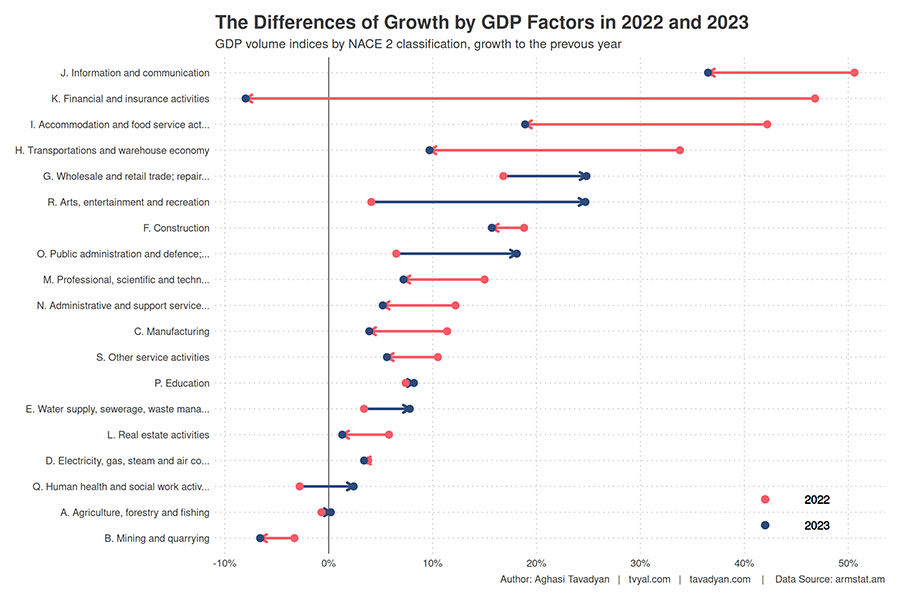In 2023, Armenia experienced a noteworthy economic growth of 8.7%, driven by key sectors such as “Wholesale and retail trade, automobile, and motorcycle repair,” “Information and communication,” and “Construction.” These sectors contributed significantly to the GDP structure, with increases of 2.9%, 1.7%, and 1.1%, respectively.
However, the real volume of GDP was tempered by declines in the “Financial and insurance activities” sector (-0.6%) and the “Mining industry and exploitation of open pits” sector (-0.2%). Additionally, the agricultural sector exhibited negative growth for the past four years, exerting a consistent adverse impact on overall economic growth.
A comparative analysis of 2022 and 2023 highlighted the pronounced influence of the “Financial and insurance activities” sector, which, after being the primary contributor to economic growth in 2022, recorded a negative contribution in 2023. Factors contributing to this decline included increased capital outflow from the banking system and substantial investments in Artsakh that faced losses in 2023.
Furthermore, the third figure illustrated a relative reduction in economic growth in 2023 compared to the previous year, showcasing a growth rate of 8.7% as opposed to the double-digit growth of 12.6% in 2022. Notably, the “Culture, entertainment, and leisure” sector played a role in the 2023 growth, contributing 0.6% to the overall GDP increase, despite having minimal impact in 2022. This shift in contributing sectors, along with concerns surrounding the negative growth in the financial and banking sector, raises important considerations for Armenia’s economic landscape.
Read also
The text underscores the intricate dynamics influencing economic growth and highlights the pivotal role played by specific sectors, capital flows, and geopolitical events in shaping the economic trajectory of Armenia in 2023.
Aghasi Tavadyan






















































